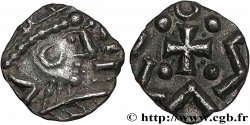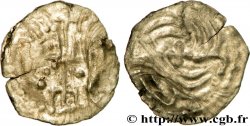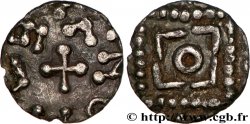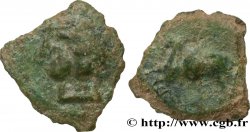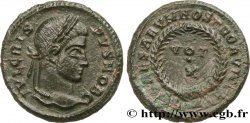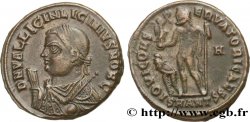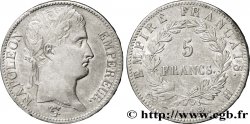v38_1695 - ENGLAND - ANGELSASSCHE Sceat ou denier à la tête radiée et à la crosse
MONNAIES 38 (2009)
Startpreis : 220.00 €
Schätzung : 300.00 €
Erzielter Preis : 256.00 €
Anzahl der Gebote : 2
Höchstgebot : 256.00 €
Startpreis : 220.00 €
Schätzung : 300.00 €
Erzielter Preis : 256.00 €
Anzahl der Gebote : 2
Höchstgebot : 256.00 €
Type : Sceat ou denier à la tête radiée et à la crosse
Datum: c. 675-750
Metall : Silber
Durchmesser : 11,5 mm
Stempelstellung : 12 h.
Gewicht : 0,89 g.
Seltenheitsgrad : R3
Kommentare zum Erhaltungszustand:
Très agréable monnaie frappée sur un flan suffisamment large pour avoir les types de droit et de revers complets. Aspect granuleux et cristallisé, mais avec une agréable patine et une très légère gangue superficielle
Vorderseite
Titulatur der Vorderseite LÉGENDE DÉGÉNÉRÉE.
Beschreibung Vorderseite Tête à droite dans un grènetis, une croisette devant le visage.
Rückseite
Titulatur der Rückseite TRACES DE LÉGENDE DÉGÉNÉRÉE.
Beschreibung Rückseite Annelet pointé entouré de trois croisettes et de trois globules posés en triangles ; l’ensemble dans un double carré perlé.
Kommentare
Ce type précis a un revers typique des sceattas anglo-saxons, avec le carré perlé. Le type de droit quant à lui pourrait aussi se retrouver sur des deniers émis par des ateliers continentaux. La croisette devant le visage (comme à Marseille) est assez récurrente sur l'argent. Le bras bénissant présent systématiquement sur certaines séries de triens est plus rarement représenté sur l’argent (cf. B. 5680), souvent interprété comme un rameau ou nue palme (?).
Sur cette monnaie, il pourrait s'agir d’un bras tenant une croix.
This specific type has a reverse typical of Anglo-Saxon sceattas, with the pearled square. The obverse type could also be found on denarii issued by continental workshops. The cross in front of the face (as in Marseille) is quite recurrent on silver. The blessing arm systematically present on certain series of triens is more rarely represented on silver (cf. B. 5680), often interpreted as a branch or bare palm (?). On this coin, it could be an arm holding a cross
Sur cette monnaie, il pourrait s'agir d’un bras tenant une croix.
This specific type has a reverse typical of Anglo-Saxon sceattas, with the pearled square. The obverse type could also be found on denarii issued by continental workshops. The cross in front of the face (as in Marseille) is quite recurrent on silver. The blessing arm systematically present on certain series of triens is more rarely represented on silver (cf. B. 5680), often interpreted as a branch or bare palm (?). On this coin, it could be an arm holding a cross








 Berichten über einen Fehler
Berichten über einen Fehler Die Seite drucken
Die Seite drucken Teilen meiner Auswahl
Teilen meiner Auswahl Stellen Sie eine Frage
Stellen Sie eine Frage Einlieferung/Verkauf
Einlieferung/Verkauf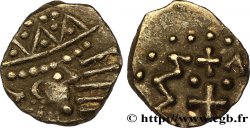
 Details
Details